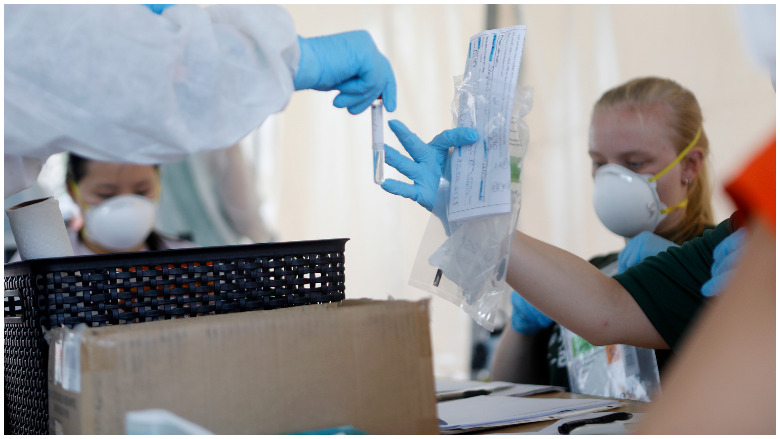
GEtty This undated handout photo from the Centers for Disease Control and Prevention (CDC) shows a microscopic view of the novel coronavirus.
As communities throughout the United States grapple with whether to reopen schools for in-person teaching, a study says many teachers could be at greater risk if they contract COVID-19.
In a July 2020 study, the Kaiser Family Foundation found that “one in four teachers (24%, or about 1.47 million people), have a condition that puts them at higher risk of serious illness from coronavirus.”
“As the nation continues to struggle to contain the spread of coronavirus, there is considerable debate about when and how to reopen schools. Education is primarily a state and local concern, and although they have received mixed guidance from federal officials, the decisions over reopening will be made at the state and local level,” the study, by multiple authors, found.
Here’s what you need to know:
The Study Analyzed How Many Teachers Have Health Conditions Known to Increase COVID-19 Risks

The study used the factors identified by the Centers for Disease Control and Prevention that increased risk of “seriousness illness” if people with those conditions became ill with coronavirus.
Those illnesses include “several health conditions, including having diabetes, chronic obstructive pulmonary disease (COPD), heart disease, moderate or severe asthma, having a body mass index (BMI) of greater than 40, or having a compromised immune system, which for example, may occur during cancer treatment,” the researchers wrote. “Being age 65 and older also is considered to be a risk factor.”
The same researchers previously found that one in four workers are also at higher risk of COVID-19. They noted that children are at less risk for serious illness than adults, but they noted that schools are populated with teachers and adult staff members also.
They found that 24 percent or 1.47 million teachers had such a condition that puts them at higher risk, about the same as workers on the whole. However, schools present special concerns, they wrote, saying, “The challenge for school systems and for teachers in particular is the sheer volume of traffic and tight quarters in many school environments, which may make social distancing a significant challenge in many settings. For higher-risk teachers, failure to achieve safe working conditions could have very serious results.”
The CDC Has Posted Extensive Guidelines for Schools

GettyThe race for a COVID-19 vaccine is on.
Throughout the United States, school districts are making different decisions. Some are going entirely online. Some are going entirely in-person. Some are doing a hybrid approach. The CDC has posted extensive guidelines to help them. You can find them here.
“As some communities in the United States open K-12 schools, CDC offers the following considerations for ways in which schools can help protect students, teachers, administrators, and staff and slow the spread of COVID-19,” CDC wrote. “Schools can determine, in collaboration with state and local health officials to the extent possible, whether and how to implement these considerations while adjusting to meet the unique needs and circumstances of the local community. Implementation should be guided by what is feasible, practical, acceptable, and tailored to the needs of each community.”
CDC noted:
The more people a student or staff member interacts with, and the longer that interaction, the higher the risk of COVID-19 spread. The risk of COVID-19 spread increases in school settings as follows:
Lowest Risk: Students and teachers engage in virtual-only classes, activities, and events.
More Risk: Small, in-person classes, activities, and events. Groups of students stay together and with the same teacher throughout/across school days and groups do not mix. Students remain at least 6 feet apart and do not share objects (e.g., hybrid virtual and in-person class structures, or staggered/rotated scheduling to accommodate smaller class sizes).
Highest Risk: Full sized, in-person classes, activities, and events. Students are not spaced apart, share classroom materials or supplies, and mix between classes and activities
A number of measures that increase safety, according to CDC, including face coverings. “Teach and reinforce use of cloth face coverings. Face coverings may be challenging for students (especially younger students) to wear in all-day settings such as school. Face coverings should be worn by staff and students (particularly older students) as feasible, and are most essential in times when physical distancing is difficult,” the agency wrote.
READ NEXT: Remembering Summer Taylor, the Seattle Protester Struck by a Car